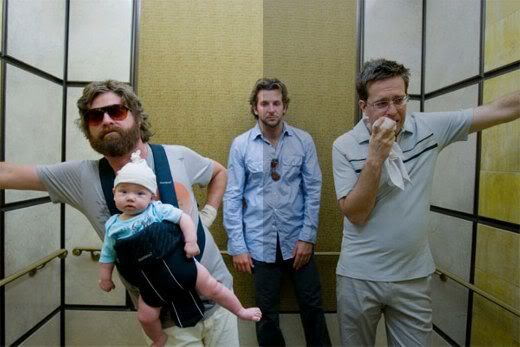So while this blog isn't necessarily focused on movies (or anything particular, really), I'm a big freakin' movie nerd. Guilty. So I found something interesting a little while ago, as an avid follower of Roger Ebert's journal in addition to his reviews (both are delightful), as it was mentioned in one of his entries. With the popularity of torrenting and stealing shit from The Man, a lot of us aren't going out to see movies as much anymore.
(I mean...not ME...cause I would never download something...ever...ehem. And I know none of you would either, darling readers...both of you.)
Anyway, with the advent of 3D technology, movie theaters have the option of either upgrading the equipment that they have, or using projectors that have a detachable 3D lens that can be added or removed depending on the needs of that particular show time. Seems like a good idea...that way, you wouldn't need to have dedicated theaters just for 3D movies (and I'll go ahead and reserve my opinion on 3D in general), but you would still be able to take advantage of huge summer blockbusters that feature debris flying into the audience's faces, or whatever it is that happens in those. HERE'S THE PROBLEM...
Now, I'm not going to insult anybody working in a movie theater, and a job is a job, and I've had my share of some shitty ones. That being said, movie theaters are often staffed by high schoolers kids who need a job after school, someone in need of a paycheck and not a career, and those without alternative vocational training. What I mean is that while I'm sure at the Cannes film festival, there are some bad-ass professional projectionists, you're not likely to see the same level of expertise at the local Regal Cinemas, just like you're not likely to see any four-star chefs behind the counter at a Taco Bell. One of the more popular models of projectors is the Sony 4k, and while it has a detachable lens that, on paper, is super convenient, the lens is too goddamned difficult to remove or add by your average joe/theater employee. So what winds up happening is they just leave the lens on whether the movie is in 3D or not.
In layman's terms, a normal lens for a normal movie allows all of the light to go through, and you have this awesome bright shiny picture to look at. When you show the same caliber or movie through a 3D lens, the lens has this big polarizing that absorbs about 50% of the light, making the resulting image dim and dull. The technology is technically compatible but there's a big reduction in quality. Here's an example of what I'm talking about:
 The right half has a 50% reduction of brightness, while the left is the original image. Now, if you didn't have them right next to each other, you might not notice the difference, but here you can see there is a drastic drop in quality. With alternatives like the aforementioned torrenting, Netflix, Hulu, HBO and whatever, going out to see a movie is, by comparison, kinda really expensive, and you're paying that money for a decent experience. If you're seeing a dim version, you're being cheated out of your admission price. To make matters worse, it can be as much as 85% darker. I mean, you could play it safe and find a theater that doesn't use digital, doesn't use Sony products, or still lights their films traditionally...
The right half has a 50% reduction of brightness, while the left is the original image. Now, if you didn't have them right next to each other, you might not notice the difference, but here you can see there is a drastic drop in quality. With alternatives like the aforementioned torrenting, Netflix, Hulu, HBO and whatever, going out to see a movie is, by comparison, kinda really expensive, and you're paying that money for a decent experience. If you're seeing a dim version, you're being cheated out of your admission price. To make matters worse, it can be as much as 85% darker. I mean, you could play it safe and find a theater that doesn't use digital, doesn't use Sony products, or still lights their films traditionally...Good luck with that.
Here's how you can tell if you're viewing a regular movie through a 3D lens. This is from Matthew Humpries at Geek.com, originally posted in Ebert's entry:
• The title of the movie listed by the theater will have a "D" after it if it is being shown on a digital projector
• If you are in a D movie, look at the projector window when seated. If you see two stacked beams of light it is a Sony projector with the 3D lens still on.
• A single beam of light means no 3D lens, or a different make of projector that doesn't have the issue
• If you see the two beams, then get up and go complain. You paid good money to see the movie, so make a fuss until they either give you back that money or remove the lens. Seeing as that's an involved and time-consuming process, expect a refund.I agree!
I'll be going out to the movies in the next couple of days, I'll be looking for the projector beam.
Roger Ebert's journal entry on the subject
An article on by Ty Burr from the Boston Globe
What would happen if the two beams crossed? [yes, I know it's 'streams' and not 'beams' but the reference still holds!]
ReplyDelete